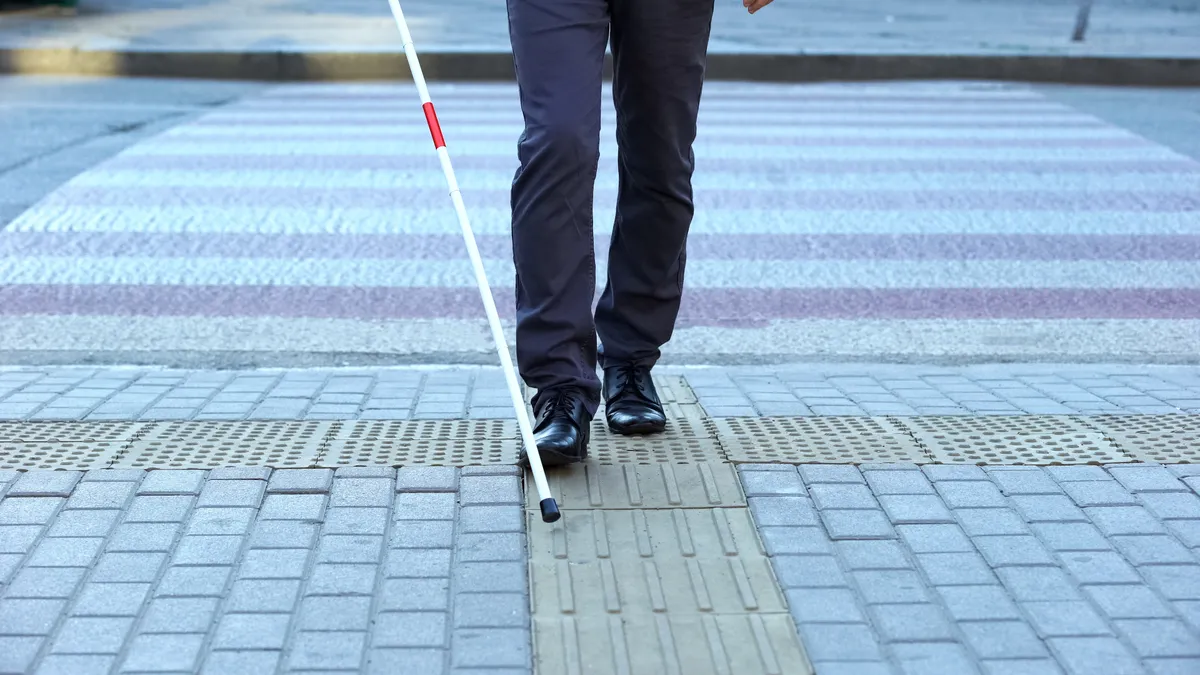Dan Phillips is a social worker, assistive technology manager and the director of public policy at Central Association for the Blind and Visually Impaired in Utica, New York. Views are the author’s own.
October is National Disability Employment Awareness Month (NDEAM), a celebration of the many contributions employees with disabilities make in the workplace. Even with a renewed focus on diversity, equity, inclusivity and accessibility, many people who are blind are not finding opportunities to use their talents in today’s workforce.
Working-age people who are blind are disproportionately unemployed. Even as employers struggle to attract and retain top talent, this group remains underemployed, often because of long-standing myths around costs and accommodations associated with making workplaces accessible to employees who are blind.
This year’s NDEAM theme, “Disability: Part of the Equity Equation,” emphasizes the importance of fostering workplace environments that are welcoming to all employees. It recognizes the vital role people with disabilities play in making today’s workforce more diverse and representative of society as they break down barriers for future employees.
NDEAM is a great time for employers to educate themselves about the capabilities of people who are blind and ensure they are creating an equitable workspace. Business leaders can start by looking at the accessible technology they offer and where they could improve. Many believe incorporating these technology options into the workplace is expensive and complicated. However, many accessible technologies are built into today’s software and operating systems or are inexpensive and easily installed.
As someone who is visually impaired, assistive technology has played a critical role in my life since high school. I was able to complete my education and use it in virtually all aspects of my career. For example, I use a program that provides a combination of screen magnification and screen reading.
I am just one example of how an employee would use assistive technology in the workplace. I work at Central Association for the Blind and Visually Impaired where employees have access to a range of technologies that meet their needs to be successful at their jobs. Some use a screen reader, others a video magnifier (CCTV), or some only use a screen magnifier. For employers, it’s imperative to have a conversation with potential employees to assess what specific assistive technology programs or devices they might need to perform their job effectively.
Employers looking to improve opportunities for employees who are blind can turn to National Industries for the Blind (NIB), the nation’s largest employment resource for people who are blind, for guidance on accommodations and creating welcoming, accessible workplaces. For decades, NIB has worked to create opportunities for people who are blind to build rewarding careers. Organizations like NIB and CABVI create environments where everyone is empowered to succeed in the workplace. This month, I urge organizations to explore how they can help build a better and more inclusive work environment for all.
Since 1945, NDEAM has been raising awareness of the capabilities of people with disabilities in the workplace. While much progress has been made, there is still work to be done. By researching and adopting resources and processes that support professional opportunities, we can all work together towards the goal of increasing employment for people who are blind. People with disabilities can achieve almost anything when given the right opportunities and my career is a clear example of that.












